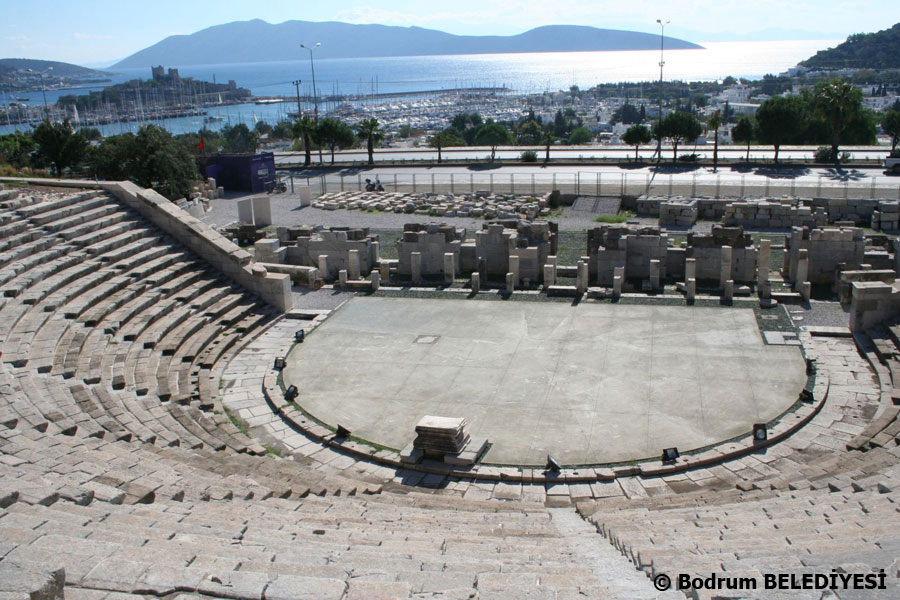 |
|
Ancient Theater in Turkey Halicarnassus |
||||||||||||
 |
|
|||||||||||
|
||||||||||||
|
Archaeologists disagree that the Hellenistic theatre was built either in the 1st half of the 3rd century BC or in the late 2nd century BC. The lower part of the cavea was completely cut out of the rock. The stage building was rebuilt during the Roman Empire. Apparently, however, the theatre was not converted into a closed Roman theatre typical of this period. The original stage house is said to have already had a 2-storey scene (stage facade) when it was built, but at the latest in the 2nd century BC. Restoration works in the years 1976 and 1985 were stopped due to lack of financial equipment already after short time again. Only in 2000, under the direction of the Bodrum Museum of Underwater Archaeology and with the help of sponsorship from the telecommunications companies Turkcell and Ericsson, the theatre began to be renovated. At the end of June 2003 the work was completed and the theatre opened to the public. |
||||||||||||
| The history of Halicarnassus: | ||||||||||||
|
Halicarnassus gained fame in classical antiquity through the mausoleum of Halicarnassus, which is counted among the classical Seven Wonders of the World. It was a tomb built for the Carian king Mausolos II. After him, similar buildings were called "mausoleums".
In 334 BC Halicarnassus was the last bulwark of the Persians against the conquest of Alexander the Great in Asia Minor. Memnon of Rhodes expanded the city and port as the operational base of the Persian fleet. Since 129 BC Halikarnassos belonged to the Roman province of Asia. |
||||||||||||
 |
||||||||||||
|
|
||||||||||||
|
|
||||||||||||
|
|
||||||||||||
|
|
||||||||||||
| Photos: @chim, Monika P. | ||||||||||||
| Translation aid: www.DeepL.com/Translator | ||||||||||||
| Source: Wikipedia and others | ||||||||||||
|
|
||||||||||||

